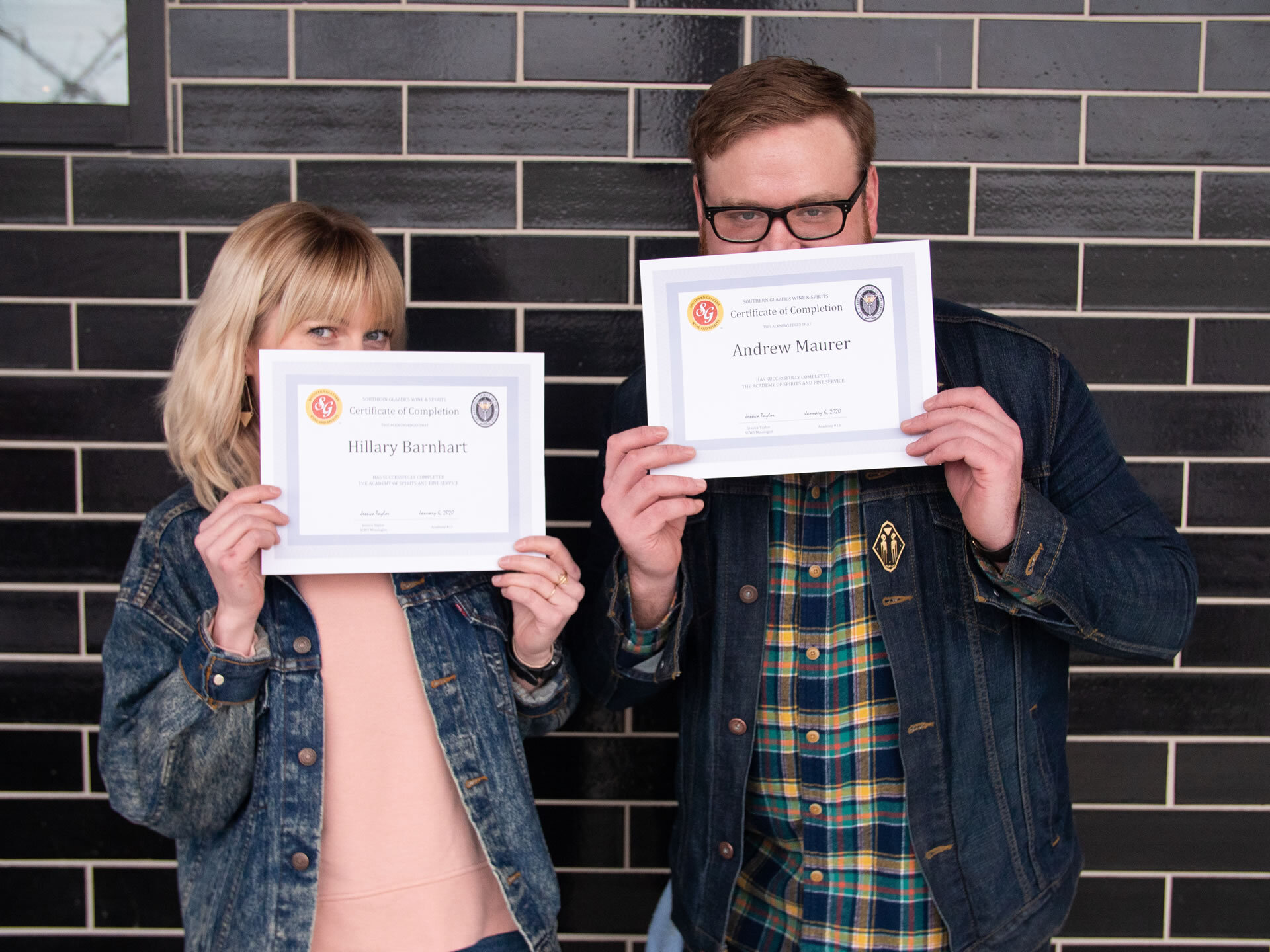
DREW MAURER
Bar Manager, Pangea Kitchen
With inspiration and encouragement from Mo at Mo’s House, both Hillary and I, along with bartenders from multiple locations, joined in to learn all things about our craft through the Academy of Spirits education. This class is normally offered in Indianapolis through Southern Glazer Wine and Spirits. It's a very sought after class that usually takes about six months to complete. Mo spoke with Mrs. Jessica Taylor (@indmixo) from Indianapolis, and Mrs. Taylor agreed to drive to Evansville and teach the class.
While the class usually takes six months to complete, Mrs. Taylor condensed it down to one month. We had class twice a week on Monday’s and Tuesday’s from 10am - 5pm.
I am always striving to learn more information about liquor and bartending as a whole, so I was really excited about this class. When I gain more confidence and knowledge in my craft, I can then share that information with my customers when they have questions about a certain liquor or drink.
On our first day, we learned how beer is made. In order to make a whiskey, you basically have to create a beer. You malt the grains and then add additional ingredients that allow the alcohol to be processed by the yeast. We also learned about mash bills of bourbons and whiskeys. For example, if you look at a bottle of bourbon, it will have a mash bill. It may have wheat or rye, but it will definitely have corn. Every bourbon must have 51% corn and it also must have malted barley. The malted barley is necessary because it releases enzymes that start the process of yeast, turns starches into sugars, and allows the yeast to make alcohol.
As long as the bourbon uses malted barley and consists of 51% corn, the maker can then decide whether to use wheat or rye. Rye is most commonly used, and you can go from high rye bourbon to low rye bourbon, which drastically changes the flavors. When more rye is used, it’s going to have a spicy and peppery taste. If you use more wheat or high corn content, it’s going to have a much sweeter and smoother flavor. These are all things that I didn’t know before the class. Now I can tell you what certain bourbons and whiskeys will taste like and what flavors to combine in cocktails, just by reading the mash bill!
Next, we learned how rum is processed and studied the various distillation processes for different types of gin. I didn’t realize there is more than one type of gin. There is Old Tom Gin, London Dry Gin, and American Style Gin, which is much newer. To be considered a gin, juniper must be used. When people say they don’t like gin, it’s usually because it tastes like a Christmas tree due to the use of juniper. American Style Gin, such as Aviation American Gin, is made specifically for cocktails and does not contain as much juniper as other types. This low amount of juniper gives you more of a citrus flavor.
I’ve taken so much away from this class and can’t wait to share what I’ve learned with our customers and use my knowledge to continue growing as a bartender here at Pangea. There are always new things to learn and add to my craft and I always strive to find ways to do better. I can learn the specifics on how to create a drink, but being able to get behind the bar and keep people interested and coming back in is the biggest goal.
Being confident is a huge part of being a bartender, and in order to reach new levels of confidence, you have to be eager to learn more and strengthen your skills. Taking this class was a huge step in the right direction for me to continue building my confidence and deliver the best experience possible for those who visit me here at the bar!



